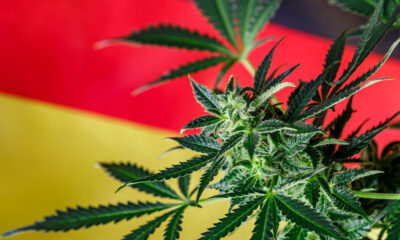
Legal
UN Reports Cannabis Use Up Amid Legalization and Covid-19 Lockdowns
The legalization of cannabis and lockdowns imposed to control the coronavirus pandemic have led to an increase in marijuana use around the globe, according to a United Nations report on drug use worldwide.
The legalization of cannabis and lockdowns imposed to control the coronavirus pandemic have led to an increase in marijuana use around the globe, according to a United Nations report on drug use worldwide. Around the world, 209 million people used cannabis in 2020, the most recent data available, according to an annual global report was recently released by the United Nations Office on Drugs and Crime. In the UNODC report, the Vienna, Austria-based organization notes that cannabis has long been the most widely used illicit drug in the world. The authors of the drug report estimate that 284 million people, or approximately 5.3% of the world’s population, used drugs including cannabis, heroin, cocaine, amphetamines or ecstasy.
Cannabis Legalization Leads to More Use
The UNODC report cites the legalization of cannabis in countries such as Uruguay, Canada and parts of the US as one of the causes of the increase of use the drug in those nations in 2020. Since then, other countries including Germany, Thailand, Malta, Spain and Mexico have taken steps to liberalize their cannabis policy laws or have plans to do so, portending the prospect of even higher levels of marijuana use in the years to come.
“Cannabis legalization appears to have accelerated the upwards trends in reported daily use of the drug,” the report said. The jump appears to be fueled by an increase in marijuana use by adults, with the authors of the report writing that the use of cannabis among teenagers “has not changed much.”
The UNODC report warned about the increase in potency of marijuana products as legalization spreads and new technologies and production methods are developed by the regulated industry. The authors cautioned that the younger generation of cannabis users appears to have an affinity for products with higher and higher levels of THC, noting that there has been “a pronounced increase in reported frequent use of high-potency products among young adults.” Although a definitive link between cannabis and the cause of mental health problems hasn’t been established, the drug report warned that the higher levels of THC found in marijuana products today could be associated with serious mental illness. The authors maintain that the increased potency of marijuana and hashish coupled with regular consumption had led to an increase in psychological illness in Western Europe.
“The proportion of people with psychiatric disorders and suicides associated with regular cannabis use has increased,” the authors of the UNODC report wrote.
Covid-19 Pandemic Drives Uptick in Cannabis Use
The UNODC report also cites the global COVID-19 pandemic for the increase in cannabis use. In many of the states in the US that have legalized cannabis commerce, licensed industry retailers, particularly medical marijuana dispensaries, were designated as essential businesses and allowed to remain in operation despite mandatory lockdowns put in place to help stem the spread of the coronavirus.
Last year, the National Institute on Drug Abuse’s annual Monitoring the Future study on substance use trends found that cannabis use rose to record levels among adults aged 19 to 30. The jump in cannabis use was particularly high among college students, with 44% reporting that they had used marijuana in 2020, a spike of six percentage points from 2015 and an increase of 14 points from the low of 30% recorded in 2006. With the jump, the incidence of cannabis use among college students rose to its highest level since 1983.
Global Cocaine Production at Record Levels
The UNODC report also notes that worldwide cocaine production reached record levels in 2020. The authors state that drug trafficking by sea is on an apparent upswing, with seizure data from 2021 suggesting that drug smugglers are expanding outside the two primary illicit markets of North America and Europe into highly populated Africa and Asia. Opioids remained the world’s most deadly class of drugs, with drug overdose deaths from the powerful painkillers surging to a record 107,622 in the US in 2021, with much of the jump attributed to the increasing presence of fentanyl in the nation’s illicit drug supply.
“Numbers for the manufacturing and seizures of many illicit drugs are hitting record highs, even as global emergencies are deepening vulnerabilities. At the same time, misperceptions regarding the magnitude of the problem and the associated harms are depriving people of care and treatment and driving young people towards harmful behaviors,” said UNODC executive director Ghada Waly. “We need to devote the necessary resources and attention to addressing every aspect of the world drug problem, including the provision of evidence-based care to all who need it, and we need to improve the knowledge base on how illicit drugs relate to other urgent challenges, such as conflicts and environmental degradation.”
The UNODC report warned that Russia’s war with Ukraine could allow illicit drug production in the area to prosper. The drug report cites evidence that conflict zones in the Middle East and Southeast Asia have served as a “magnet” for the illicit production of synthetic drugs, which can be manufactured almost anywhere.
According to the UNODC report, the number of dismantled amphetamine laboratories in Ukraine rose from 17 in 2019 to 79 in 2020, the highest number of seized laboratories reported in any country that year.
“You don’t have police going around and stopping laboratories” in war zones, said UNODC expert Angela Me.

























